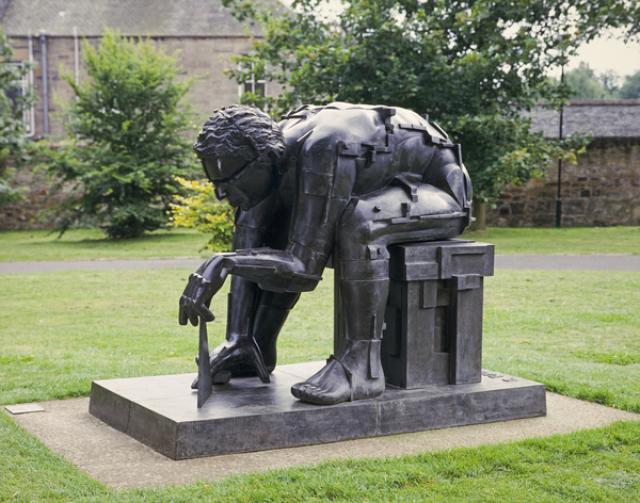Collage
An image constructed from found materials, such as photographs, paper or fabric, glued to a surface, sometimes with additional painted or drawn elements. It is an art form particularly associated with Dada and Surrealism.

The Origins of Collage: Synthetic Cubism
Collage techniques in various forms have existed for centuries, however the term was officially adopted by the Cubist artists Pablo Picasso and Georges Braque in the early twentieth century. They coined the term, as derived from the French word coller (to glue), to describe their experimental pastings, combining fragments of diverse materials including newspaper cuttings, old photographs, pieces of paper, wood, canvas and linoleum into their artworks.
The introduction of collage elements into Cubist artworks marked the transition from Analytical to Synthetic Cubism. The cut and paste techniques of Synthetic Cubism were explored by both Picasso and Braque in simplified compositions, such as Picasso’s Tete, (Head), 1912. Incongruous combinations of materials were often layered together with drawing and painting materials, creating rich and complex surfaces, seen in Picasso’s Guitare, bec à gaz, flacon (Guitar, Gas-jet and Bottle), 1913, works which splintered traditional perceptions of reality into broken viewpoints and angles.
Dada and Surrealism
Some of the most imaginative examples of collage were produced by Dada and Surrealist artists in the early twentieth century, who produced unconventional combinations of materials exploring the absurd and irrational. Surrealist artist Max Ernst’s collage techniques were ground-breaking and highly influential, from the paper rubbings of surfaces combined together to create fantastical landscapes in his book Histoire Naturelle to the irreverent musings in his Une Semaine du Bonte, 1934, which made unlikely narratives from found nineteenth-century engravings.
Dadaist Kurt Schwitters also produced inventive collages in his Merz series, combining ordinary fragments from his daily life including tickets, wallpaper scraps, string, rags, wood, wire and nails into densely layered, earthy toned collages, including Mz 129 rot oben (Mz Red on top), 1920.
Matisse, Mondrian and Cornell
Towards the mid-twentieth century collage continued to be a popular choice for experimental of artists. French artist Henri Matisse produced countless papiers decoupes (cut papers) in his later years, exploring the colours, shapes and patterns of plant forms and Moroccan textiles in Le Cauchemar de L’Elephant Blanc (The Nightmare of the White Elephant), 1947. Even Piet Mondrian is said to have explored collage as a compositional tool to aid his paintings, designing the layouts for his famous Boogie-Woogie series via coloured paper cut-outs. American artist Joseph Cornell took collage techniques closer to construction in his shadow boxes, creating enigmatic assemblages from eclectic ensembles of arranged objects such as Untitled (Bird Box), 1948.
Pop Art and Collage
Throughout the 1960s collage as a form of cultural appropriation was a hugely important element of Pop Art. In Britain, Eduardo Paolozzi, Richard Hamilton and Peter Blake produced complex arrangements combining aspects of popular culture, reflecting on the state of consumerist, sexualised society, such Paolozzi’s Take Off, 1950. In the United States Robert Rauschenberg incorporated collaged elements with silkscreened techniques, bringing together modern and historical imagery to create powerful documents of American society.
Collage Today
Given the open, experimental nature of collage, the endless possibilities for reinvention and its potential for reflecting on society through contemporary imagery, it continues to be a popular choice for many artists working today. Tony Swain combines collage and painting in his mysterious, semi-abstract images, which he first collages together with newspaper pieces before disguising with passages of paint, distorting and transforming the original source. Similarly, British artist John Stezaker treats found photographs as readymade objects, layering them together into unlikely partnerships that subvert their original meaning, allowing elements of the surreal and fantastical to shine through.













